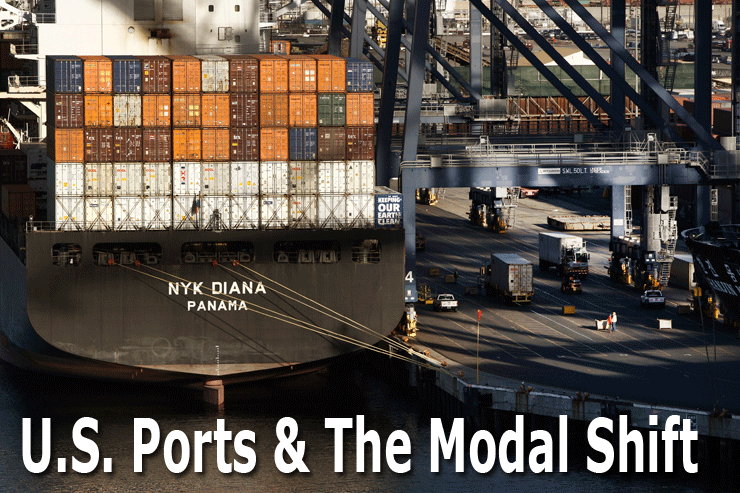
The union-employer dispute
at U.S. West Coast ports, which left ships waiting in port and cargo and
equipment stranded across the nation for much of the last year, finally
ended in May when a new 5-year labor agreement was signed between the
International Longshore and Warehouse Union (ILWU) and the Pacific Maritime
Association (PMA).
The long-running saga offered a much-needed
boost to global, and specifically transpacific, air cargo markets. But
with West Coast port operations now returning to normal, will any of that
modal shift be retained by the air cargo sector?
As a new report by analysts Drewry confirms,
the U.S. port delays of the last year did indeed result in a tangible
shift of cargo from ocean to air, reversing the long-term trend that has
seen cargoes previously flown increasingly shipped by container shipping
lines. Although the volume shift to the skies as a percentage of total
trade was small, its value to the air cargo community was immense.
“The U.S. port delays were forcing
a number of shippers to resort to paying for much more expensive air freight
in order to replenish stocks in the run-in to Christmas,” said Drewry.
This saw Drewry’s East-West Air Freight
Price Index, a weighted average of all-in air freight "buy rates"
paid by forwarders to airlines for standard deferred airport-to-airport
air freight services on 21 major East-West routes for cargoes above 1,000
kgs, soar to $3.92 per kg in November 2014.
However, said Drewry, despite the faster
growth rate of air cargo volumes during the port labor impasse, air cargo
only increased its share of the U.S. import containerizable trade to around
2.8 percent, up from 2.4 percent at the start of 2014.
“In normal circumstances there is
very little overlap in the goods that ocean and air cargo move, but the
small bubble they do fight over in the middle includes items and parts
from the hi-tech, fashion, and automotive industries among a small select
group that require expedited transportation,” said Drewry.
“U.S. Census Bureau data shows that
air cargo has been increasing its market share in these areas.”
Census Bureau figures suggest that high-tech
commodities registered the biggest modal shift over the last year, although
other sectors were also boosted and some continue to benefit. “Fashionable
clothing has been switching to air in recent months in readiness for the
summer season,” said Drewry. “The need to get more mundane
everyday clothing, such as men’s vests and T-shirts, is less pressing,
but even here there has been a small move towards air cargo.”
But what next? Drewry takes the view that
as port operations improve on the U.S. West Coast, the reversal in the
long-term shift towards ocean will resume, resulting in air cargo again
seeing its share of U.S. import trade fall.

 But
there could be a short-term upside. “The prospects of missed sailings
in the peak season as ocean carriers look to redress the supply-demand
imbalance could potentially prolong the blip for a small number of high-value
goods,” added the report. But
there could be a short-term upside. “The prospects of missed sailings
in the peak season as ocean carriers look to redress the supply-demand
imbalance could potentially prolong the blip for a small number of high-value
goods,” added the report.
A long-term reversal of the last year’s
shift to air is also the industry consensus. “Now that the port
situation in the U.S. has normalized, we have stopped seeing organized
ocean to air freight conversion on the transpacific trade lane,”
said Sou Ping Chee, (right) Regional Head of Airfreight Asia Pacific for
Panalpina.
“Under normal circumstances we do
not expect to see massive ocean to air conversion in view of the usually
slower demand during the summer months.”
Paul Tsui, (left) the immediate past chairman
of the Hong Kong Association of Freight Forwarding Agents and the Federation
of Asia Pacific Aircargo Associations, said operations at the port of
LA had now returned to normal and there were no longer delays. However,
the overall market outlook across modes was currently weak on the Transpacific.
“In fact, air freight has slowed for the last couple of weeks, but
ocean freight is even worse,” he added. “But overall volumes
should improve by the third week of August.”
SkyKing |





